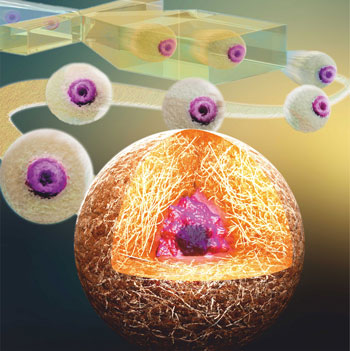 The novel method keeps cells alive for multiple weeks, which makes it easier to study them. This makes it possible to, for example, test the action of new drugs and improve stem cell therapies with unparalleled control.
The novel method keeps cells alive for multiple weeks, which makes it easier to study them. This makes it possible to, for example, test the action of new drugs and improve stem cell therapies with unparalleled control.
Jun 12th, 2017
Read more
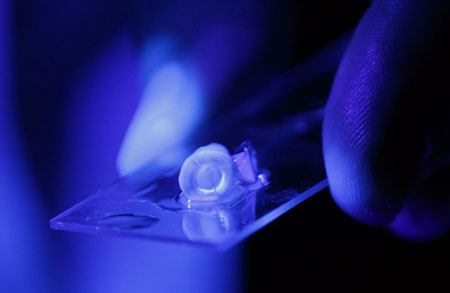 Researchers have developed a process by which they can engineer new blood vessels in teeth, creating better long-term outcomes for patients and clinicians.
Researchers have developed a process by which they can engineer new blood vessels in teeth, creating better long-term outcomes for patients and clinicians.
Jun 12th, 2017
Read more
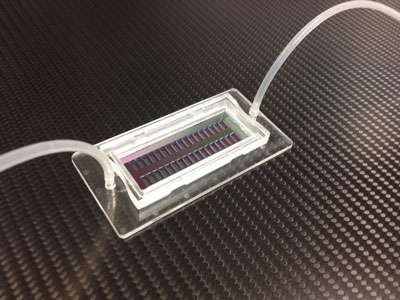 Researchers have developed a new microhole chip that enables cells to be identified and characterized reliably within minutes.
Researchers have developed a new microhole chip that enables cells to be identified and characterized reliably within minutes.
Jun 7th, 2017
Read more
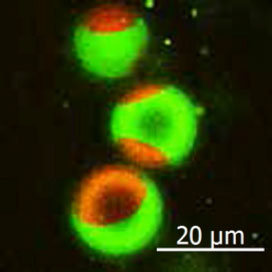 Scientists have developed new fluorescent synthetic molecules (analogs) that structurally mimic sphingomyelins and can be studied in live cells.
Scientists have developed new fluorescent synthetic molecules (analogs) that structurally mimic sphingomyelins and can be studied in live cells.
Jun 5th, 2017
Read more
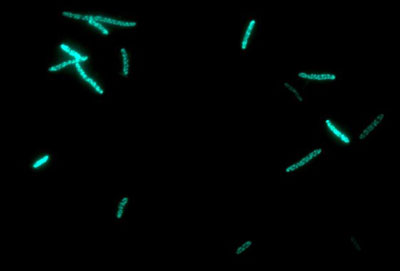 Researchers have developed a method of producing P450 enzymes - used by plants to defend against predators and microbes - in bacterial cell factories. The process could facilitate the production of large quantities of the enzymes, which are also involved in the biosynthesis of active ingredients of cancer drugs.
Researchers have developed a method of producing P450 enzymes - used by plants to defend against predators and microbes - in bacterial cell factories. The process could facilitate the production of large quantities of the enzymes, which are also involved in the biosynthesis of active ingredients of cancer drugs.
Jun 2nd, 2017
Read more
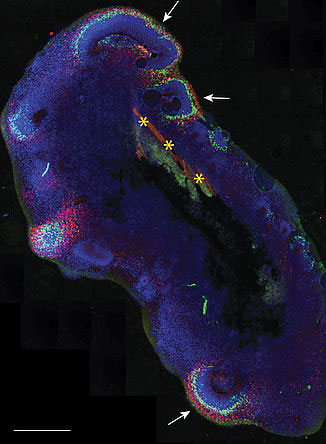 Scientists for the first time combine organoids with bioengineering. Using small microfilaments, they show improved tissue architecture that mimics human brain development more accurately and allows more targeted studies of brain development and its malfunctions.
Scientists for the first time combine organoids with bioengineering. Using small microfilaments, they show improved tissue architecture that mimics human brain development more accurately and allows more targeted studies of brain development and its malfunctions.
May 31st, 2017
Read more
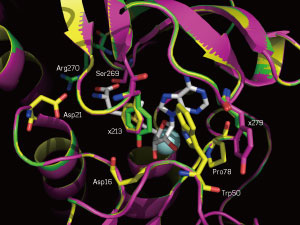 Directed evolution has been used to design enzymes able to make imaging agents for medical diagnosis.
Directed evolution has been used to design enzymes able to make imaging agents for medical diagnosis.
May 31st, 2017
Read more
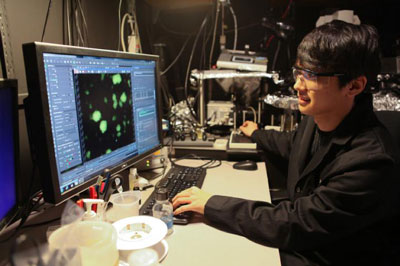 Researchers have developed a way to place onto surfaces special coatings that chemically 'communicate' with bacteria, telling them what to do. The coatings, which could be useful in inhibiting or promoting bacterial growth as needed, possess this controlling power over bacteria because, in effect, they 'speak' the bug's own language.
Researchers have developed a way to place onto surfaces special coatings that chemically 'communicate' with bacteria, telling them what to do. The coatings, which could be useful in inhibiting or promoting bacterial growth as needed, possess this controlling power over bacteria because, in effect, they 'speak' the bug's own language.
May 30th, 2017
Read more
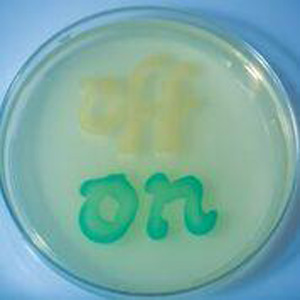 Researchers designed a powerful bacterial sensor with a stable gene circuit in a colonizing bacterial strain that can record gut inflammation for six months in mice. This study offers a solution to previous challenges associated with living diagnostics and may bring them closer to use in human patients.
Researchers designed a powerful bacterial sensor with a stable gene circuit in a colonizing bacterial strain that can record gut inflammation for six months in mice. This study offers a solution to previous challenges associated with living diagnostics and may bring them closer to use in human patients.
May 29th, 2017
Read more
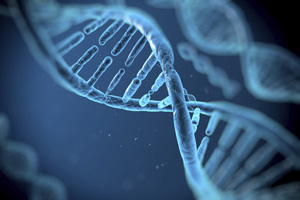 As CRISPR-Cas9 starts to move into clinical trials, a new study has found that the gene-editing technology can introduce hundreds of unintended mutations into the genome.
As CRISPR-Cas9 starts to move into clinical trials, a new study has found that the gene-editing technology can introduce hundreds of unintended mutations into the genome.
May 29th, 2017
Read more
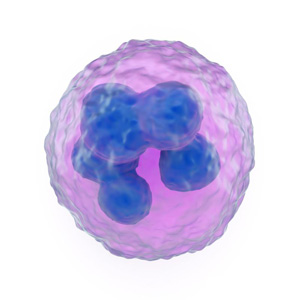 An experimental treatment in mice allows the reprogramming of blood cells in order to promote the healing process of cutaneous wounds. This approach could prove to be beneficial in healing challenging wounds in diabetics and major-burn victims.
An experimental treatment in mice allows the reprogramming of blood cells in order to promote the healing process of cutaneous wounds. This approach could prove to be beneficial in healing challenging wounds in diabetics and major-burn victims.
May 29th, 2017
Read more
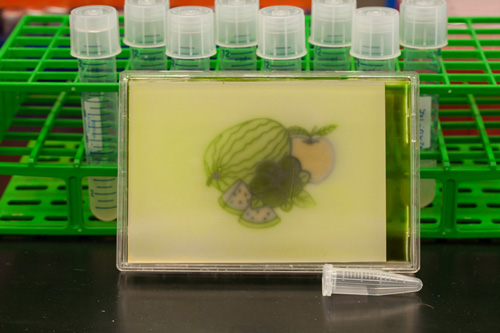 Red, green, and blue light can be used to control gene expression in engineered E. coli.
Red, green, and blue light can be used to control gene expression in engineered E. coli.
May 26th, 2017
Read more
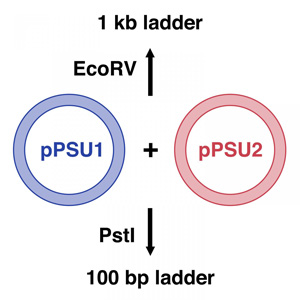 New, license-free DNA ladders will allow researchers to estimate the size of fragments of DNA for a fraction of the cost of currently available methods.
New, license-free DNA ladders will allow researchers to estimate the size of fragments of DNA for a fraction of the cost of currently available methods.
May 26th, 2017
Read more
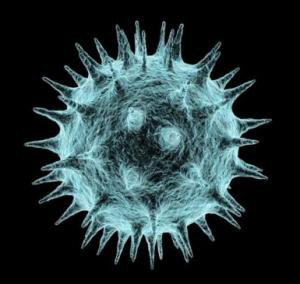 Scientists have created artificial viruses that can be used to target cancer. These designer viruses alert the immune system and cause it to send killer cells to help fight the tumor. The results provide a basis for innovative cancer treatments.
Scientists have created artificial viruses that can be used to target cancer. These designer viruses alert the immune system and cause it to send killer cells to help fight the tumor. The results provide a basis for innovative cancer treatments.
May 26th, 2017
Read more
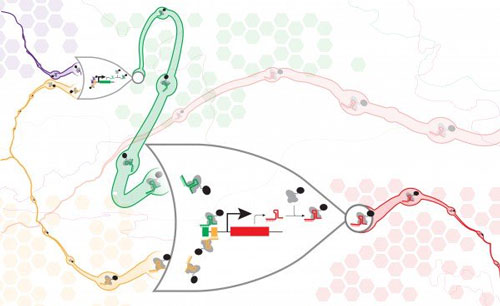 A team of synthetic biology researchers have demonstrated a new method for digital information processing in living cells, analogous to the logic gates used in electric circuits.
A team of synthetic biology researchers have demonstrated a new method for digital information processing in living cells, analogous to the logic gates used in electric circuits.
May 25th, 2017
Read more
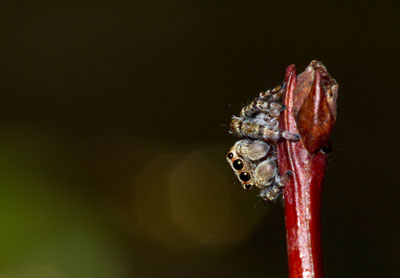 Researchers have managed to synthesise lung surfactant, a drug used in the care of preterm babies, by mimicking the production of spider silk. Animal studies reveal it to be just as effective as the biological drugs currently in clinical use.
Researchers have managed to synthesise lung surfactant, a drug used in the care of preterm babies, by mimicking the production of spider silk. Animal studies reveal it to be just as effective as the biological drugs currently in clinical use.
May 23rd, 2017
Read more
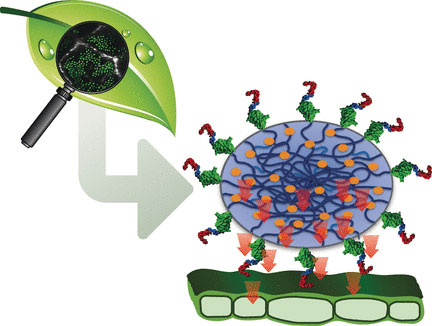 Tailored microgel containers for plant health.
Tailored microgel containers for plant health.
May 22nd, 2017
Read more
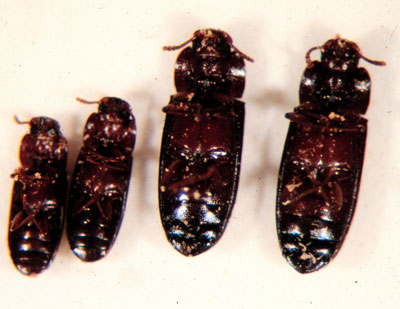 Study challenges use of powerful gene-editing technology to prevent malaria, other diseases.
Study challenges use of powerful gene-editing technology to prevent malaria, other diseases.
May 20th, 2017
Read more
 The novel method keeps cells alive for multiple weeks, which makes it easier to study them. This makes it possible to, for example, test the action of new drugs and improve stem cell therapies with unparalleled control.
The novel method keeps cells alive for multiple weeks, which makes it easier to study them. This makes it possible to, for example, test the action of new drugs and improve stem cell therapies with unparalleled control.
 Subscribe to our Biotechnology News feed
Subscribe to our Biotechnology News feed















